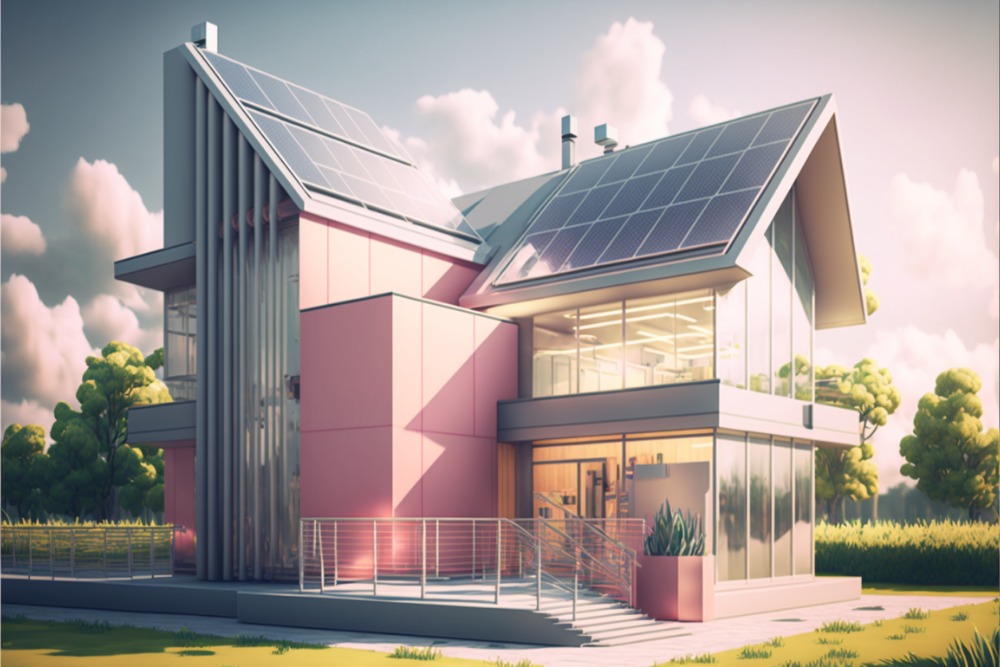While they may have been a nice to have or didn’t seem as effective in the past, solar panels have become a staple for many, with solar panel customers producing enough electricity for all their needs and getting off fossil fuels. This means you’ll be able to have eco-friendly and sustainable energy sources powering your home in the foreseeable future. So while there may be an upfront cost, you will spend less on electricity down the line.

Below we’ll look to see how you get solar panels for your home with a possible cost-free installation.
How much Solar Panels Typically Cost
Often we find ourselves avoiding installing solar panels because they seem to have that huge upfront cost. Yet they are one of the best investments you can make for your future costs and the future of the environment.
Yet in a recent report by Consumer Affairs, the U.S. Government has given a generous tax incentive, leaving the cost to install solar panels at around $12,000 on average with all the federal incentives calculated. So if you’re wondering what some of the averages are you’ll be paying to install these solar panels, it all starts with the size of your house, according to Home Guide.
- The national average is at $16,168
- The average range is between $10,626 and $26,460
The prices will go up as the size of the home goes up, and there are other factors to consider, such as the capacity of the system measured in kilowatts or kW. It also matters which state you’re getting your solar panels in. As an example, and also one of the lower ranges of costs comes from Kansas, which for a 6kW system, costs $8,940 – $12,360.
“It may appear as if the upfront cost for a solar panel system is large, but the financial benefits will appear in the long term. This is a solid investment as it reduces your monthly electricity costs to zero.”
President and CEO of Real Good Solar, Steve Kircher
Saving money with Solar Panels
Tax Credits – Federal
No need to be concerned about such a high price as there’s a financial incentive to get solar panels straight from the Federal Government. The current credit is called the ITC, which is available to anyone who is a homeowner in the U.S.
“Since 2022, you’re able to credit all the way to 30% of the costs of solar for your home. The tax credit is available for any system installed before December 31, 2032.”
President and CEO of Renova Energy, David Field.
Some programs offer the system at no cost, whereas the installers own the system. Thus they would get the credit for you, and you would lose out on the financial incentives, so keep that in mind during your solar panel journey.
Loans for Solar
“Now it’s possible to take out loans to get yourself a solar panel system. Essentially it’s there to finance the whole system with consistent monthly payments. It helps to gain a solar system still and realize long-term benefits financially.” CEO of Sol Systems, James P. Cassina.
Some have stated that you don’t even need to put any funds down, such as EnergySage, and price it where it’ll come in cheaper than your electric bills. The system ownership will also be yours, which means incentives and rebates!
Power Purchase Agreements (PPA)
“You can get solar panels upfront without the hefty cost through a PPA. With this, a third party will own the system, install it, and sell you the electricity the panels generate. It means using clean energy without any costs.”
Founder and CEO of SolarPower.com, Sarah O’Leary.
When you go down this route, though, while you’re still effectively doing your part for the environment and getting yourself powered by clean solar energy, you’re not really going to reap any short- or long-term benefits. This is because you eliminate any of those tax credits offered by the government, and you will still find yourself paying someone for your power every month.
That doesn’t mean it’s not a good idea because you won’t have to maintain the solar panel systems themselves, as the third party will handle everything end to end. But, essentially, you may have a bit lower monthly electric costs and have to give up your roofing space.
Discover more online about Solar
One thing to note about solar is that two advantages come with it. First, you’re leading towards less reliance on toxic fossil fuels that would eventually be depleted. That’s one win for the environment. The other is that you also won’t have to pay for or pay so much for the electricity that you end up using. More technology is coming out beyond the solar panels that help you store the extra energy produced efficiently for a longer term. Thus you end up having no monthly electricity bill.
“With solar panels, you’re able to join the clean energy revolution by getting your own system, essentially with nothing upfront. Either you sign up for a PPA, and all the work and maintenance is done for you, and the solar panels provide you with electricity. Or you can get yourself a specialized loan that will help to get the process started for the long-term benefits of having solar panels on your roof and collect those incentives.”
Vice President of Market Strategy from Solar Energy Industries Association – John Simirnow.
Go online and find yourself a local company that provides you with solar panels and installation today to start seeing how much it will cost you (and how much you can save). The benefits are there to be lapped up.






